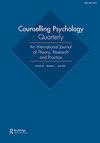大学生助人意向的调查:抑郁、自杀和杀人倾向
IF 1.6
Q3 PSYCHOLOGY, APPLIED
引用次数: 0
摘要
摘要抑郁症在大学生中很常见。很少有研究调查当一名学生与同伴合影时,同伴的帮助意图。此外,很少有研究考察帮助意图如何随着表现的严重程度而变化(例如,如果存在自杀或杀人意念)。我们通过收集大量大学生样本的数据来解决这些问题。通过一项在线调查,参与者被随机分配到三种实验情景中的一种,一个假设的同伴患有抑郁症(n=198)、抑郁症伴自杀意念(抑郁症SI;n=194)和抑郁症伴杀人意念(抑郁症HI;n=175)。然后,参与者对一定程度的帮助意图做出回应。不同情况下的受访者表示,他们通常有意帮助同龄人。转介至心理健康专业人员和家庭成员的频率最高,转介至热线或网站的频率最低。抑郁HI状态的参与者报告了最大的帮助意图,其次是抑郁SI状态的参与者。抑郁症患者的帮助意愿最低。大学生可能打算帮助他们的同龄人解决心理健康问题,特别是当同龄人面临可能表明暴力威胁的风险因素时。本文章由计算机程序翻译,如有差异,请以英文原文为准。
An examination of college student helping intentions: depression, suicidal, and homicidal presentations
ABSTRACT Depression is common in college students. Little research has examined peer helping intentions when a student is posed with a peer disclosing depression. Moreover, little research has examined how helping intentions may change with presentation severity (e.g. if suicidal or homicidal ideation is present). We addressed these questions by collecting data from a large sample of college students. Participants were randomly assigned through an online survey into one-of-three experimental vignette conditions to a hypothetical peer with depression (n =198), depression with suicidal ideation (Depression-SI; n = 194), and depression with homicidal ideation (Depression-HI; n = 175). Participants then responded to a measure of helping intentions. Respondents across conditions indicated they generally intended to help their peer. Referrals to a mental health professional and family members were the most frequently chosen, with referrals to a hotline or website being the least frequently chosen. Participants in the Depression-HI condition reported the greatest helping intentions, followed by participants in the Depression-SI condition. Participants in the Depression condition reported the lowest helping intentions. College students likely intend to help their peers with mental health concerns, particularly if the peer is presenting with risk factors that may indicate a threat of violence.
求助全文
通过发布文献求助,成功后即可免费获取论文全文。
去求助
来源期刊

Counselling Psychology Quarterly
PSYCHOLOGY, APPLIED-
CiteScore
6.20
自引率
6.70%
发文量
30
期刊介绍:
Counselling Psychology Quarterly is an international interdisciplinary journal, reporting on practice, research and theory. The journal is particularly keen to encourage and publish papers which will be of immediate practical relevance to counselling, clinical, occupational, health and medical psychologists throughout the world. Original, independently refereed contributions will be included on practice, research and theory - and especially articles which integrate these three areas - from whatever methodological or theoretical standpoint. The journal will also include international peer review commentaries on major issues.
 求助内容:
求助内容: 应助结果提醒方式:
应助结果提醒方式:


